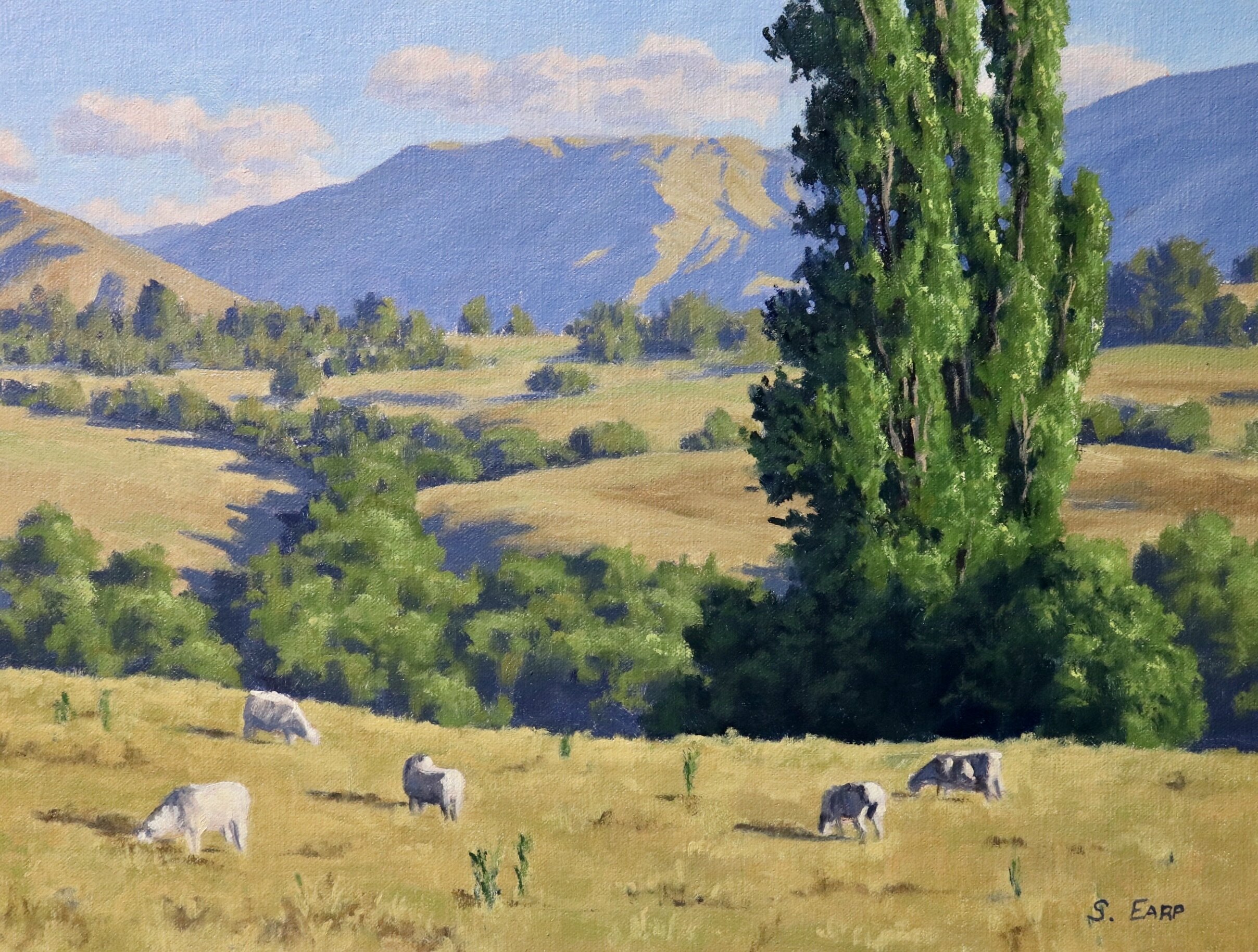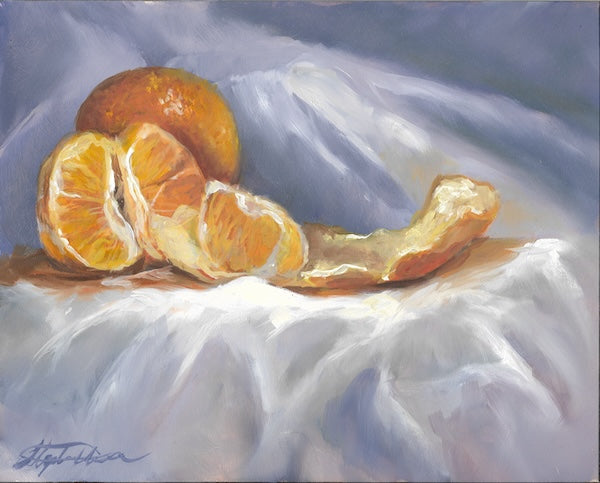Artist-Made Masterpieces: Oil Paintings for Sale by Creators
Artist-Made Masterpieces: Oil Paintings for Sale by Creators
Blog Article
Exploring Everything About Oil Paintings: A Guide to Understanding Their Charm and Worth
Oil paints have actually astounded audiences for centuries, providing a glance into the creative mastery of different periods. Their abundant history is intertwined with cutting-edge strategies and extensive psychological expression. Recognizing the materials and approaches behind these artworks can improve recognition. Furthermore, the market for oil paints presents possibilities for enthusiasts and capitalists alike. As one discovers this remarkable globe, the concern occurs: what makes an oil painting genuinely useful?
The Background of Oil Painting: A Trip Via Time
Oil paint has origins that date back to old times, it truly prospered during the Renaissance, when artists uncovered its convenience and abundant color possibility. Early examples can be traced to the 7th century, with techniques developing significantly across cultures. The medium came to be popular in Northern Europe in the 15th century, particularly via the works of musicians like Jan van Eyck, who spearheaded its usage for in-depth realistic look and vibrant tones. This period noted a separation from tempera paints, permitting greater deepness and appearance. As oil paint spread, it influenced numerous artists, leading to masterpieces by distinguished numbers such as Leonardo da Vinci and Rembrandt. The tool's tradition proceeds, shaping the art world well into modern-day times.
Recognizing Oil Paints: Products and Techniques
As artists discover the world of oil paints, they experience a varied range of materials and methods that define this tool. The primary parts of oil paint include pigments, which provide color, and drying oils, such as linseed, that bind the pigments and assist in application. Numerous additives can change the paint's structure and drying time, boosting adaptability. Strategies like glazing, where transparent layers are built up, and impasto, which entails applying thick paint, enable different visual effects. In addition, making use of brushes, combination knives, and also fingers can create unique textures and finishes. Recognizing these products and strategies enables musicians to fully share their creativity and achieve the preferred influence in their artwork.
The Role of Color in Oil Paintings
Shade plays a critical role in oil paintings, influencing both visual appeal and psychological vibration. Comprehending shade theory basics, including the partnerships between shades, can enhance an artist's capacity to convey mood and ambience. Furthermore, grasping color mixing techniques permits better deepness and splendor in a paint's scheme.

Color Theory Fundamentals
Understanding color theory is necessary for musicians working with oil paints, as it forms the structure for developing aesthetically engaging and harmonious structures. Shade theory includes the study of just how shades engage, the shade wheel, and the relationships between key, additional, and tertiary shades. Artists use complementary colors to improve contrasts and produce prime focus, while analogous shades promote unity and cohesiveness within an item. Additionally, the concepts of great and cozy colors influence the perception of depth and area in a painting. Realizing these principles permits artists to manipulate color effectively, directing the viewer's eye and communicating their designated message. Proficiency of color theory eventually enhances a musician's capacity to share emotions and concepts through their job.
Emotional Effect of Color
The psychological impact of color in oil paints plays an important function in just how audiences view and connect with artwork. Shades evoke certain feelings and moods, influencing the customer's emotion. For example, cozy colors like oranges and reds can develop a sense of heat and energy, while awesome tones such as blues and environment-friendlies usually stimulate calmness or self-contemplation. Artists tactically choose shade combinations to enhance narrative aspects, directing the audience's psychological trip. The saturation and comparison of shades further amplify these impacts, drawing interest and creating emphasis. Ultimately, the interplay of shades in oil paints not just enhances their visual appeal but likewise acts as an effective tool for psychological expression, enhancing the visitor's experience and interpretation.
Color Combining Techniques
While several facets of oil painting add to the total make-up, understanding shade mixing techniques is crucial for achieving desired effects and depth. Shade blending can be approached via various techniques, including the subtractive and additive procedures. Additive blending involves combining colors of light, while subtractive blending counts on pigments, where colors mix to develop new tones. Artists frequently utilize a restricted combination to create unified jobs, understanding the partnerships between main, secondary, and tertiary colors. Techniques such as glazing and scumbling further improve deepness and luminance. By masterfully mixing shades, an artist can stimulate emotions, develop centerpieces, and accomplish a feeling of realistic look, eventually boosting the paint's emotional and visual influence.
Famous Oil Painters and Their Iconic Works

Well known for their proficiency of color and strategy, oil painters have produced several of one of the most popular artworks in history. Renowned artists like Vincent van Gogh captivated target markets with his emotive brushwork in "Starry Evening," while Claude Monet's "Impression, Daybreak" laid the foundation for Impressionism. Leonardo da Vinci's "Mona Lisa" continues to be a long-lasting sign of creative wizard, showcasing his skill in recording human expression. At the same time, Rembrandt's "The Evening Watch" shows his innovative use light and darkness. Other noteworthy numbers consist of Pablo Picasso, who revolutionized modern art with his bold trial and error in jobs like "Les Demoiselles d'Avignon," and Georgia O'Keeffe, whose vivid depictions of blossoms and landscapes assisted click here specify American modernism. Each artist's one-of-a-kind style contributed greatly to the oil paint landscape.
Exactly how to Review the Quality of an Oil Paint
Reviewing the high quality of an oil painting includes a mindful evaluation of workmanship techniques, in addition to an analysis of shade and make-up. Observing brushwork, layering, and the application of paint can disclose the artist's skill degree. Furthermore, the interaction of colors and the total plan of components contribute considerably to the painting's aesthetic value.
Analyzing Craftsmanship Methods
A careful assessment of craftsmanship methods is essential for establishing the high quality of an oil paint. Evaluators ought to initially take a look at the application of paint; thick, distinctive brushstrokes may suggest a skilled hand, while extremely consistent applications might indicate an absence of depth. oil paintings for sale. The layering technique is additionally important; the existence of lusters and varied thickness can boost brightness and complexity. In addition, the high quality of the products utilized, such as the canvas and pigments, plays a significant duty in toughness and total aesthetic. Interest to information in components like edges and shifts in between colors shows the musician's commitment to their craft. Inevitably, these methods add to the painting's psychological impact and market price, working as indications of the artist's ability and intent
Assessing Color and Make-up
While assessing the top quality of an oil painting, one need to concentrate on the interplay of shade and composition, as these aspects are basic to the artwork's general impact. Color options can evoke feelings and establish mood; as a result, the musician's scheme need to be analyzed for harmony and contrast. A well-balanced composition directs the viewer's eye and creates a sense of unity. Musicians typically employ techniques like the rule of thirds or leading lines to enhance aesthetic passion. In addition, using light and darkness can add depth, enhancing the three-dimensionality of the painting. Eventually, an effective oil paint weds shade and make-up, engaging the viewer and inviting a deeper recognition of the musician's vision and method.
Caring for and Preserving Oil Paintings
Correct treatment and conservation of oil paints is necessary for maintaining their integrity and long life. To shield these art work, it is important to display them far from straight sunlight, which can create fading and staining. Maintaining a stable setting with controlled temperature and moisture further help in protecting against damages. Cleaning up should be done delicately utilizing a soft, completely dry fabric, avoiding any kind of extreme chemicals that could harm the paint or varnish. Normal examinations for indicators of damage, such as breaking or flaking, are a good idea. When moving or saving oil paints, appropriate extra padding and framing are essential to prevent physical injury. Ultimately, attentive care adds to the aesthetic charm and value of oil paints over time.
The Marketplace for Oil Paintings: Accumulating and Investing
Understanding the market characteristics for oil paints is vital for investors and collection agencies alike. The worth of these artworks is influenced by different aspects, including the musician's online reputation, historical importance, and existing fads. Collection agencies usually look for pieces that resonate personally while thinking about possible appreciation in value. Galleries and auctions act as main venues for purchasing and marketing, with prices fluctuating based on demand and rarity. Buying oil paintings requires research into the market, in addition to an understanding of authenticity and provenance. In addition, arising musicians may use opportunities for considerable returns, while developed names can regulate high prices. Generally, a strategic method to accumulating can generate both aesthetic enjoyment and economic rewards.

Often Asked Inquiries
What Are the Ecological Impacts of Oil Painting Materials?
The ecological impacts of oil painting products include the release of unstable natural substances (VOCs), harmful waste generation, and source extraction for pigments. These aspects add to pollution and environmental degradation, raising problems amongst environmentally conscious musicians and consumers.
Just How Do Different Canvases Influence Oil Painting Outcomes?
Various canvases influence oil paint results considerably. Surface, absorbency, and structure quality can alter paint application, drying out times, and shade vibrancy. Artists typically pick specific canvases to attain desired effects and enhance their artistic expression.
Can Oil Paintings Be Brought Back if Harmed?
Oil paintings can undoubtedly be restored if damaged. Specialist conservators use various strategies to fix splits, clean surface areas, and address staining, making sure that the art work preserves its initial elegance and worth for future generations.
What Are the Signs of an Original Oil Painting?
The indicators of an original oil paint consist of visible brush strokes, appearance variants, and an irregular canvas weave (oil paintings for sale). Additionally, authenticity might be confirmed through provenance, trademarks, and the presence of a varnish layer unique to oil mediums
Just How Has Technology Influenced Modern Oil Paint Techniques?
Modern technology has actually greatly affected modern-day oil painting techniques by presenting digital tools for preparation, enhanced products for texture and long life, and online platforms for sharing and marketing art, consequently expanding musicians' imaginative possibilities and target market get to. Oil painting has origins that date back to old times, it really prospered during the Renaissance, when artists uncovered its flexibility and abundant color capacity. The psychological impact of color in oil paints plays an important duty in how customers regard and attach with artwork. While lots of facets of oil painting contribute to the total composition, understanding color blending methods is vital for achieving wanted effects and depth. Evaluating the quality of an oil paint involves a mindful evaluation of craftsmanship techniques, as well as an evaluation of color and structure. While evaluating the top quality of an oil paint, one need to focus on the interplay of shade and structure, as these components are fundamental to the art work's overall effect.
Report this page